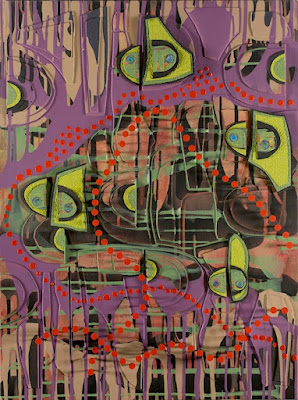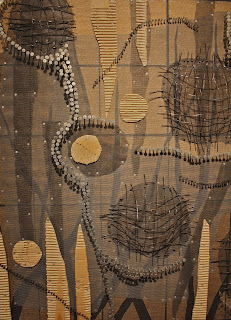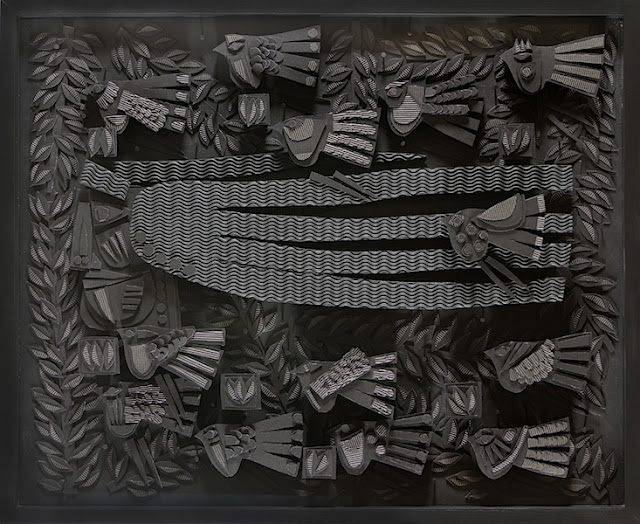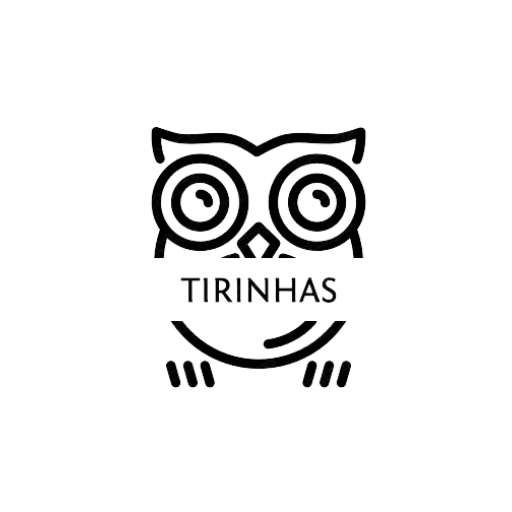Advertisements
 |
| André Lidgus, Viewpoints, paint, matte board, nails, 25.5 x 19.5″ |
All the work on this show simultaneously communicates high spirits and reassuring stability. The assertive color clashes happily; the construction is impeccably disciplined. Lidgus eschews artists' materials, turning to cardboard, carpenter's nails, sandpaper, house paint and other common treasures. His combination of color choices, attentive finishing, and biomorphic forms remind me of mid-20th century art. This may explain an air of classicism that I feel strongly in this beautiful work.
From afar, it's easy to feel the music in a work like Viewpoints, in which the viewer can find a lyrical line of red dots underlined by a broad and slightly dissonant violet, flowing between the rhythmic beats of black and pink strokes. The green shapes are shaped like the convex and concave curve and cut of a grand piano.
 |
| Andrew Lidgus, detail, Viewpoints |
It can also be seen, up close, that the entire surface of Point of view it is in fact created from many stacked planes. It is a topography of heights and is further complicated by also being a topography of colors, as the painting does not follow the geography of the cuts.
Viewpoints is a beautiful, multi-faceted work of visual art that any viewer can journey through for a long time again and again. But your delight can be greatly multiplied when considering it as an example of interarts, also full of musical content. This looks as complex and free music sounds. We can experience this in feeling, in a synthesis of sight and sound.
Lidgus shows a variety of “looks” in Duality, but all of this is strongly related by rhythm, order and color. Whether he relies on painting with raised elements, or works in monotonous bas-relief, or a mixture of the two, it all comes together to give his body of work tremendous integrity.
| André Lidgus. In the privacy of my mind (left) and Midnight sky (right). |
At first glance, the two pieces above may appear different, as one is painted and the other is all black, made primarily from woven strips of matte cardboard. Yet the proximity of these works feels natural and restful. What makes them tick?
Maybe it's the rounded-up shape on each piece: the circle on the right and the semicircle on the left. Each work is dominated by lines. However In the privacy of my mind repeats semicircles, these forms are filled with vertical lines; the circles in Midnight sky are composed of the grids that fill the work. In this latest work, it looks different that strong oblique lines cut through the surface of the grid, breaking the simple grid. But the first surface of In privacy… It is not straight at all, but is built from lines like reeds in the wind, grouped, undulating and irregular. In other words, there are enough similarities in design elements and rhythms to relate the two works. Or rather, to illustrate how Lidgus, whatever piece he's working on, is working from the same intellectual and emotional space, experiencing the integrity of his own soul's store of material, not working with that finger in the wind.
 |
| André Lidgus, In the privacy of my mind, wood, paint, 25.5 x 31.5.” NB the three-dimensionality. |
Most of the works in this exhibition are constructed from various types of cardboard or matte cardboard. Lidgus uses them both as basic support and to elevate surfaces, be they the tiny topographical gradations that we see in Viewpoints or the semicircles that dominate the surface In the privacy of my mind. Sometimes he uses corrugated cardboard stripped of the layer of paper that usually masks the ripples, so that he benefits from the texture of the paper's waves.
Curators (and buyers) need to be concerned about the durability of “non-traditional” materials. The other side of the coin is the expressive and poetic aspects of these materials. I've looked at Lidgus's work before: he is precise in his use of his everyday materials. Cardboard has its own merits in a dignified way that I hadn't conceded before. I find myself admiring its color, which sometimes appears like gold against black; its hard appearance in one setting and softness in another; the effects possible with total or partial removal of the corrugation surface; sometimes its strength and its appearance when it bends. Lidgus uses cardboard with the seriousness of a model maker, of a person who is planning, who is in the middle of thinking, who is Conceive while you work.
 |
| André Lidgus, Conscious, detail. NB stripped corrugated (with metal mesh, nails, wire in sandpaper) |
This is my first exposure to Andrew Lidgus, and I find his work fascinating. Its composition, colors and sensibility are classic and recall beautiful moments from Picasso and Matisse, as well as mid-century design.
But it is his desire to extend mental and material space beyond the usual limits that shows his power. Take off to various planes without committing to the sculpture; find a way to bring the eye and ear closer together. For Lidgus, proximity is not ceasing to be one or the other, but a unique condition in itself. His works cannot be described or defined as fine art or music; as precious or raw, as sculpture or painting. They are nothing like that and challenge the discussion of artistic traditions on several levels.
Duality? This is a concept that Lidgus's work seems to refuse.
 |
| André Lidgus, Bird Man, matte board, wood, 25.5 x 31.5.” How many colors does “black” represent? |



